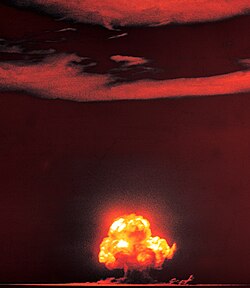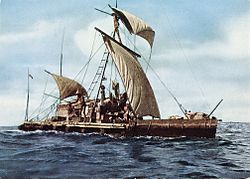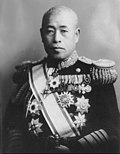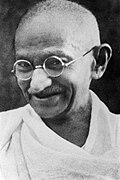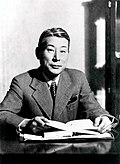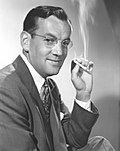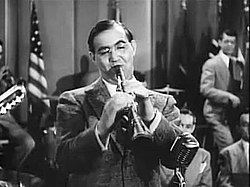
Below title bar: events after World War II: From left to right: The Declaration of the State of Israel in 1948; The Nuremberg trials are held after the war, in which the prominent members of the political, military, and economic leadership of the defeated Nazi Germany are prosecuted; After the war, the United States carries out the Marshall Plan , which aims at rebuilding Western Europe; ENIAC , the world's first general-purpose electronic computer.
| Millennia |
|---|
| 2nd millennium |
| Centuries |
| Decades |
| Years |
| Categories |
The 1940s (pronounced "nineteen-forties" and commonly abbreviated as "the '40s" or "the Forties") was a decade that began on January 1, 1940, and ended on December 31, 1949.
Contents
- Politics and wars
- Wars
- Major political changes
- Internal conflicts
- Decolonization and independence
- Prominent political events
- Economics
- Assassinations and attempts
- Science and technology
- Technology
- Science
- Popular culture
- Film
- Music
- Literature
- Fashion
- People
- Military leaders
- Activists and religious leaders
- Politics
- Scientists and engineers
- Actors / Entertainers
- Musicians
- Bands
- Sports
- See also
- Timeline
- Notes
- References
- Further reading
- External links
Most of World War II took place in the first half of the decade, which had a profound effect on most countries and people in Europe, Asia, and elsewhere. The consequences of the war lingered well into the second half of the decade, with a war-weary Europe divided between the jostling spheres of influence of the Western world and the Soviet Union, leading to the beginning of the Cold War. To some degree internal and external tensions in the post-war era were managed by new institutions, including the United Nations, the welfare state, and the Bretton Woods system, facilitating the post–World War II economic expansion, which lasted well into the 1970s. The conditions of the post-war world encouraged decolonization and the emergence of new states and governments, with India, Pakistan, Israel, Vietnam, and others declaring independence, although rarely without bloodshed. The decade also witnessed the early beginnings of new technologies (such as computers, nuclear power, and jet propulsion), often first developed in tandem with the war effort, and later adapted and improved upon in the post-war era.
The world population increased from about 2.25 to 2.5 billion over the course of the decade, with about 850 million births and 600 million deaths in total.
















